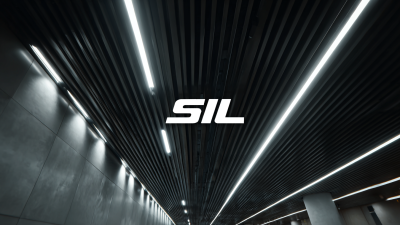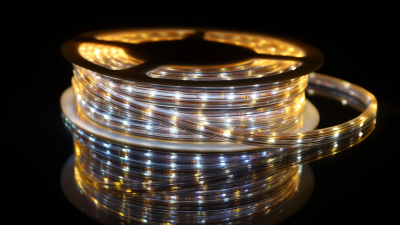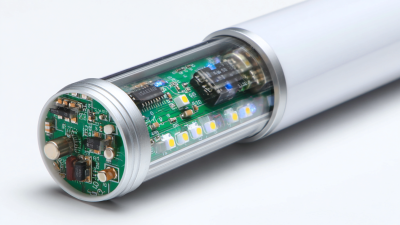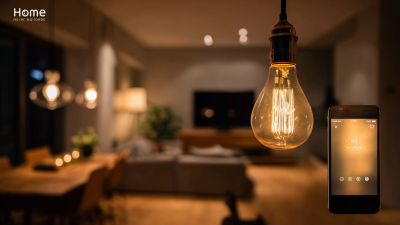Why LED Linear Lights Are Revolutionizing Energy Efficiency in Commercial Spaces: Key Industry Insights
As commercial spaces strive for energy efficiency and sustainability, LED linear lights are emerging as a game-changer in the lighting industry.
According to a report by the U.S. Department of Energy, LED lighting is expected to reduce energy consumption for lighting by 29% by 2025, translating to significant cost savings for businesses.
LED linear lights, in particular, offer a long lifespan, lower heat emissions, and flexibility in design, making them an ideal choice for various commercial applications.
Industry insights from the National Electrical Manufacturers Association (NEMA) indicate that the adoption of LED technology can lead to energy savings of up to 75% compared to traditional fluorescent fixtures.
These advancements not only aid in reducing operational costs but also contribute to achieving sustainability goals, reinforcing the pivotal role of LED linear lights in modern commercial spaces.
The Emergence of LED Linear Lights in the Commercial Sector
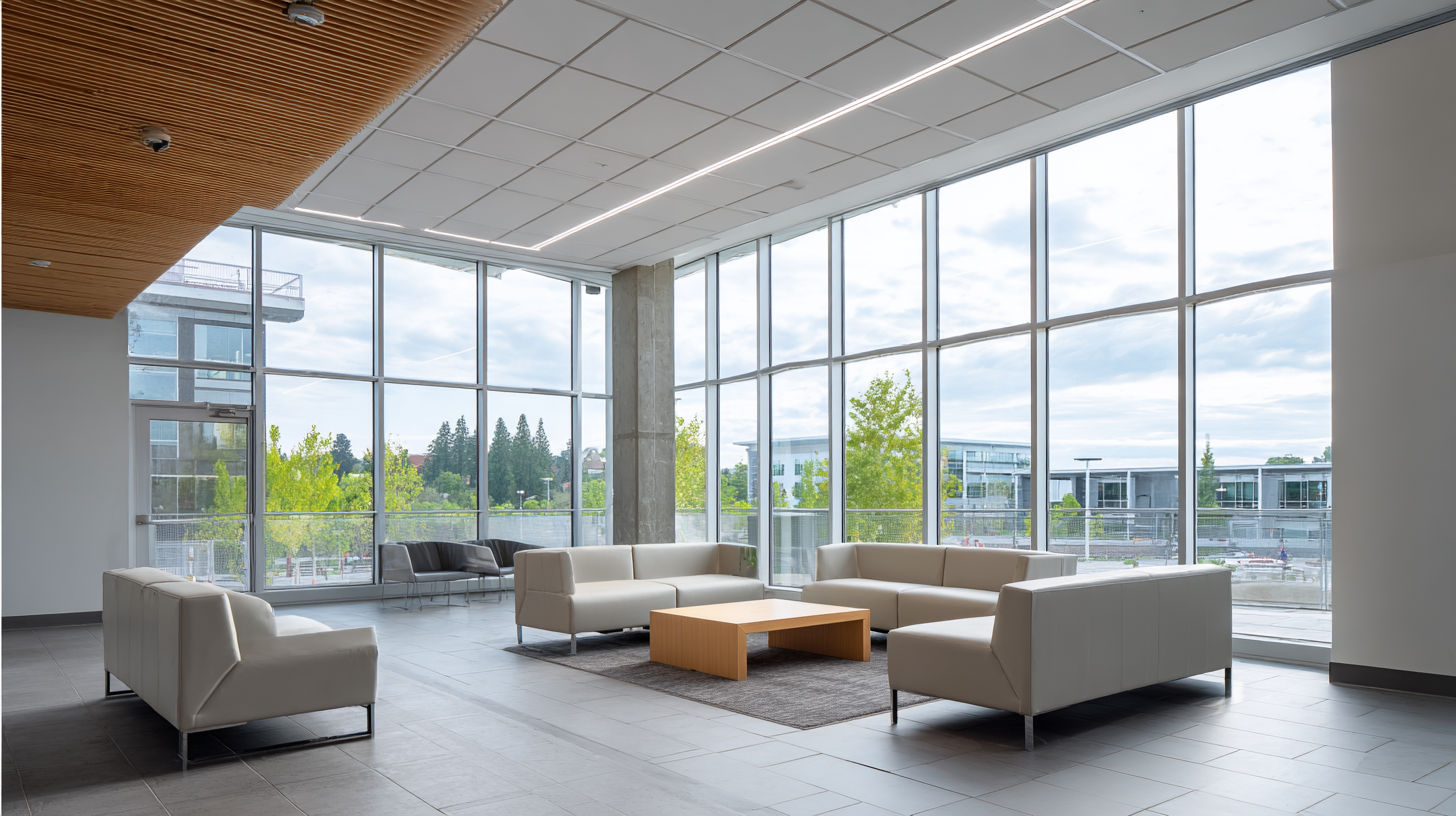 The emergence of LED linear lights in the commercial sector is transforming the way businesses approach lighting solutions. Unlike traditional lighting systems, LED linear lights offer a sleek, modern design that seamlessly integrates into various commercial spaces, from offices to retail stores. Their ability to provide uniform illumination not only enhances the aesthetic appeal but also improves the overall functionality of these environments.
The emergence of LED linear lights in the commercial sector is transforming the way businesses approach lighting solutions. Unlike traditional lighting systems, LED linear lights offer a sleek, modern design that seamlessly integrates into various commercial spaces, from offices to retail stores. Their ability to provide uniform illumination not only enhances the aesthetic appeal but also improves the overall functionality of these environments.
Tips: When considering LED linear lights for your commercial space, focus on selecting fixtures with adjustable brightness and color temperature. This flexibility allows you to create a dynamic atmosphere that can adapt to different activities and times of day. Additionally, explore options with smart technology integration, enabling you to control your lighting remotely and optimize energy consumption.
As businesses increasingly prioritize sustainability, LED linear lights are becoming a preferred choice due to their energy efficiency and longevity. They consume significantly less power than traditional options, resulting in lower electricity bills and reduced carbon footprints. This trend highlights the industry's shift towards more sustainable practices, making LED linear lighting not just a smart investment but also a crucial step in promoting environmental responsibility within commercial spaces.
Comparative Analysis: LED Linear Lights vs. Traditional Lighting Solutions
The transition from traditional lighting solutions to LED linear lights in commercial spaces signifies a pivotal shift in energy efficiency and operational costs. Traditional lighting, such as incandescent and fluorescent bulbs, often fall short in terms of energy consumption and longevity. These older lighting technologies typically require frequent replacements and maintenance, leading to increased operational expenses and waste. In contrast, LED linear lights boast remarkable energy efficiency; they consume up to 75% less energy, significantly lowering utility bills while maintaining optimal brightness and quality.
Moreover, LED linear lights have a longer lifespan, lasting up to 50,000 hours or more compared to merely 1,000-2,000 hours for conventional bulbs. This longevity not only reduces waste but also minimizes the need for labor-intensive replacements, making LED solutions more sustainable and cost-effective over time. Additionally, LEDs emit less heat, further enhancing energy efficiency and creating a more comfortable environment for occupants. In summary, the comparative advantages of LED linear lights over traditional lighting solutions highlight a transformative opportunity for businesses aiming to enhance their energy efficiency and reduce overall operational costs.
Why LED Linear Lights Are Revolutionizing Energy Efficiency in Commercial Spaces
| Feature |
LED Linear Lights |
Traditional Lighting Solutions |
| Energy Consumption (W) |
40 |
120 |
| Lifespan (Hours) |
50,000 |
1,000 |
| Annual Energy Cost ($) |
48 |
144 |
| Light Output (Lumens) |
4,000 |
2,500 |
| Heat Emission (°C) |
35 |
70 |
| Environmental Impact |
Low (non-toxic) |
High (contains mercury) |
Energy Savings and Cost Reduction: The Financial Benefits of LED Technology
The adoption of LED linear lights in commercial spaces has ushered in a new era of energy efficiency, offering substantial financial benefits alongside enhanced lighting solutions. According to the U.S. Department of Energy, LED lighting can reduce energy consumption for lighting by up to 50-75% compared to traditional incandescent and fluorescent options. This impressive reduction not only translates to lower electricity bills but also significantly decreases the overall carbon footprint of businesses, which is becoming increasingly important as sustainability goals take priority in corporate strategies.
In addition to energy savings, LED technology contributes to cost reduction through its extended lifespan and decreased maintenance needs. Research from the Lighting Research Center indicates that LEDs can last up to 25,000 hours or more, compared to 1,000 hours for incandescent bulbs. This longevity reduces replacement frequency and associated labor costs, further enhancing financial savings for companies. Furthermore, numerous case studies reveal that businesses upgrading to LED systems have realized return on investment (ROI) in less than three years, making LED linear lights a smart choice for organizations looking to optimize both their operational costs and environmental responsibility.
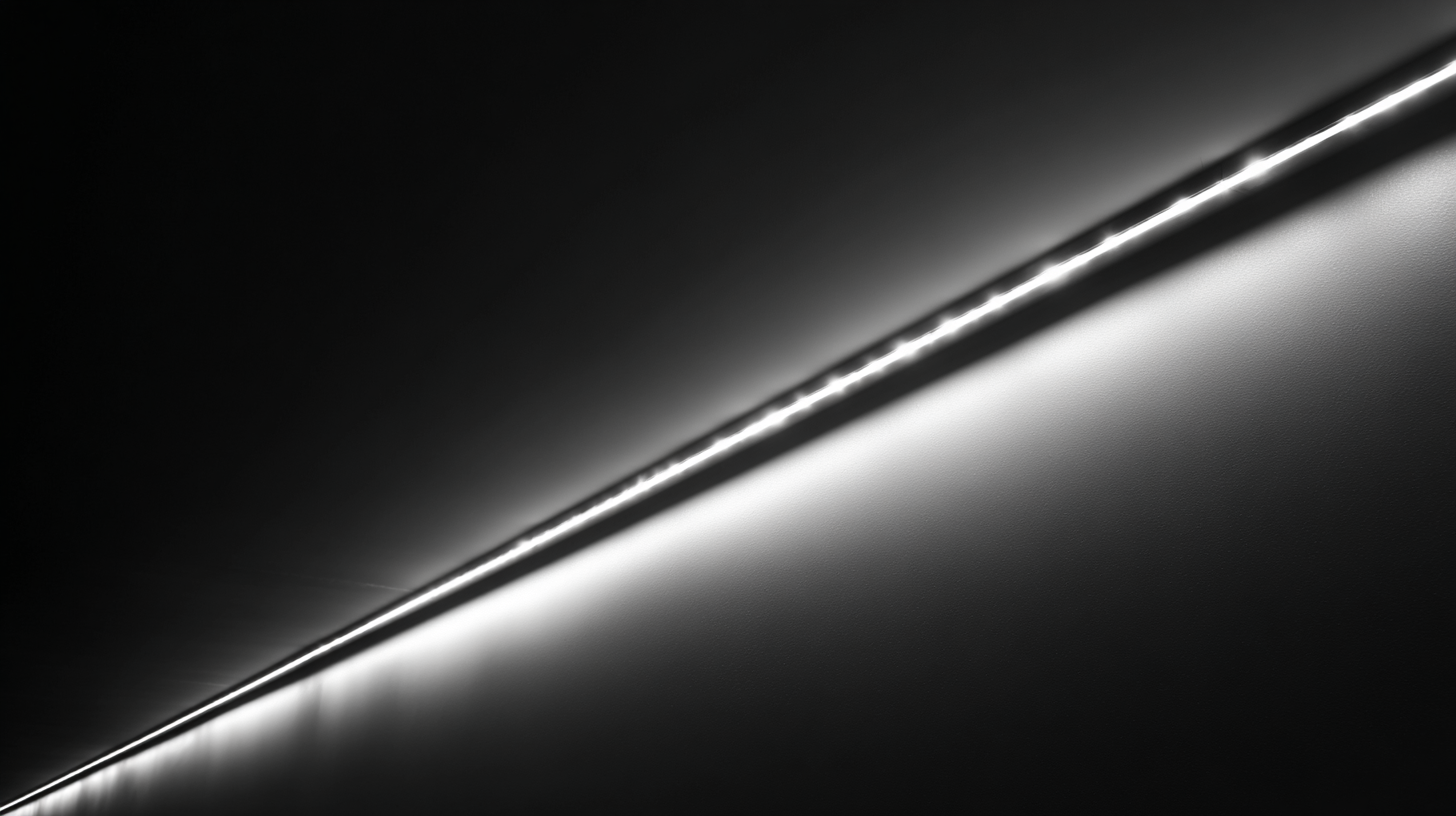
Environmental Impact: How LED Linear Lights Promote Sustainability
LED linear lights are making significant strides in commercial lighting, not just by enhancing efficiency but also by promoting sustainability. These lights consume substantially less energy compared to traditional lighting solutions, which translates to reduced greenhouse gas emissions. Their long lifespans also mean fewer replacements, leading to less waste in landfills. As companies become more aware of their environmental responsibilities, integrating LED linear lights into commercial spaces stands out as an effective strategy for minimizing their carbon footprint.
**Tips for Maximizing Sustainability with LED Lighting:**
1. **Choose the Right Lumens**: Ensure you select LED linear lights that provide the right brightness for your space, thereby avoiding over-illumination and wasted energy.
2. **Utilize Smart Technology**: Integrate motion sensors and smart controls that automatically adjust lighting based on occupancy and natural light availability. This not only saves energy but extends the life of your LED fixtures.
3. **Implement Line Voltage LED Solutions**: Opt for line voltage LED systems which eliminate the need for bulky transformers, further reducing material waste and enhancing energy efficiency.
By making the switch to LED linear lighting, businesses can contribute to a more sustainable future while enjoying the economic benefits of energy savings.
Future Trends: Innovations Shaping the LED Linear Lighting Landscape
The landscape of LED linear lighting is rapidly evolving, driven by innovations that enhance energy efficiency and aesthetic appeal in commercial spaces. Emerging technologies, such as smart lighting systems equipped with IoT capabilities, are becoming essential in the industry. These systems allow for real-time monitoring and control, enabling businesses to optimize energy use based on occupancy patterns and ambient light levels. Such advancements not only reduce energy costs but also promote sustainability by minimizing waste.
Another significant trend is the integration of advanced materials and designs that improve the lifespan and performance of LED linear lights. Innovations like heat-dissipating structures and enhanced optics contribute to more efficient light distribution and reduced maintenance needs. Additionally, the focus on human-centric lighting, which considers the impact of light on well-being, is gaining traction. This approach emphasizes tunable white and color-changing options that cater to the psychological and physiological needs of occupants, making commercial environments more inviting and productive. As these trends continue to shape the future of LED linear lighting, businesses are poised to benefit from both operational efficiencies and improved user experiences.
Energy Efficiency of LED Linear Lights in Commercial Spaces
This bar chart illustrates the significant difference in energy consumption between traditional lighting systems and LED linear lighting in commercial spaces. The data shows that LED linear lighting dramatically reduces energy consumption, promoting better energy efficiency and sustainability in the workplace.

Home
About Byone
Factory Tour
Products
Project Portfolio
Download
Blog
Contact Us
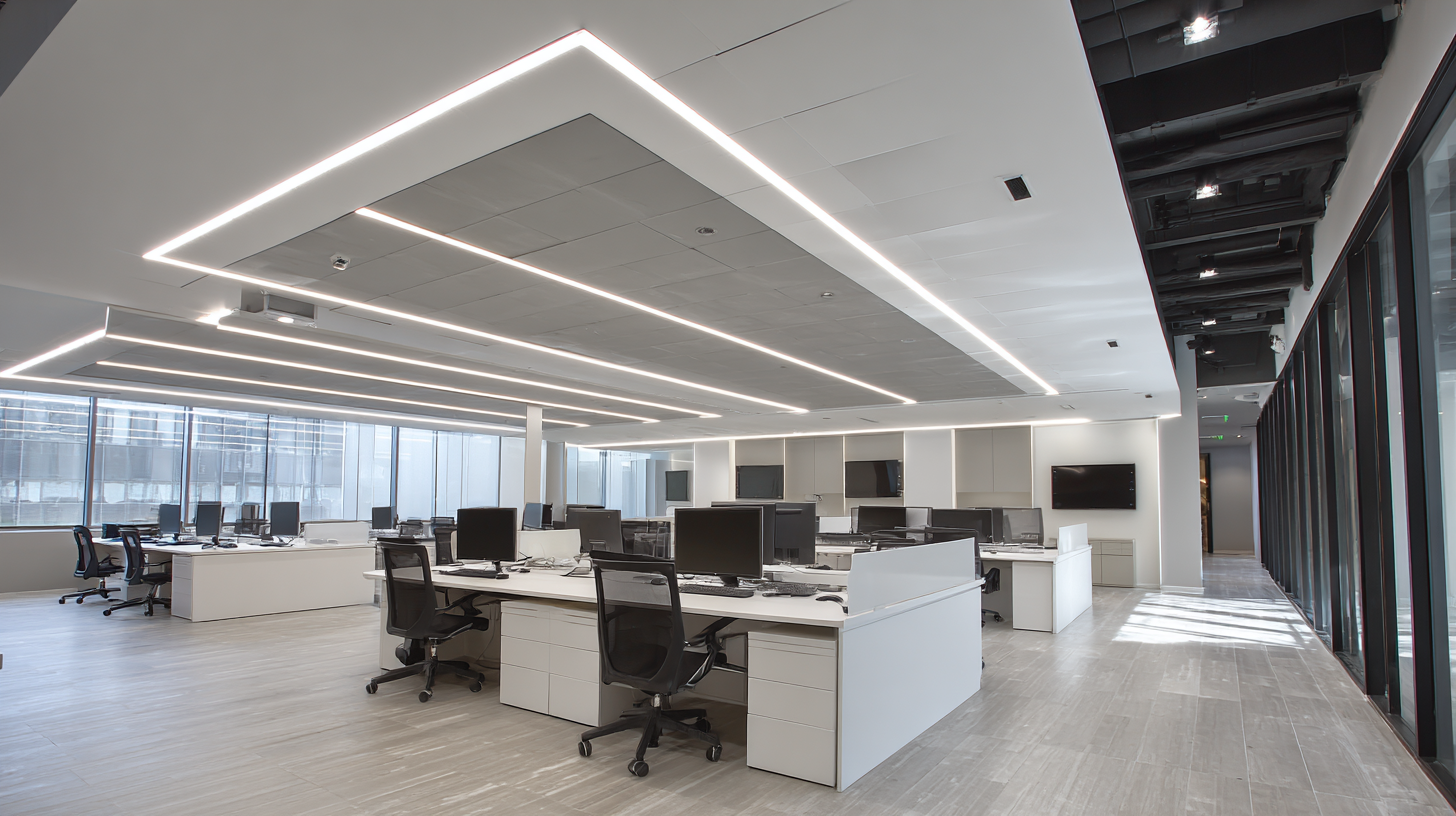
 The emergence of LED linear lights in the commercial sector is transforming the way businesses approach lighting solutions. Unlike traditional lighting systems, LED linear lights offer a sleek, modern design that seamlessly integrates into various commercial spaces, from offices to retail stores. Their ability to provide uniform illumination not only enhances the aesthetic appeal but also improves the overall functionality of these environments.
The emergence of LED linear lights in the commercial sector is transforming the way businesses approach lighting solutions. Unlike traditional lighting systems, LED linear lights offer a sleek, modern design that seamlessly integrates into various commercial spaces, from offices to retail stores. Their ability to provide uniform illumination not only enhances the aesthetic appeal but also improves the overall functionality of these environments.
